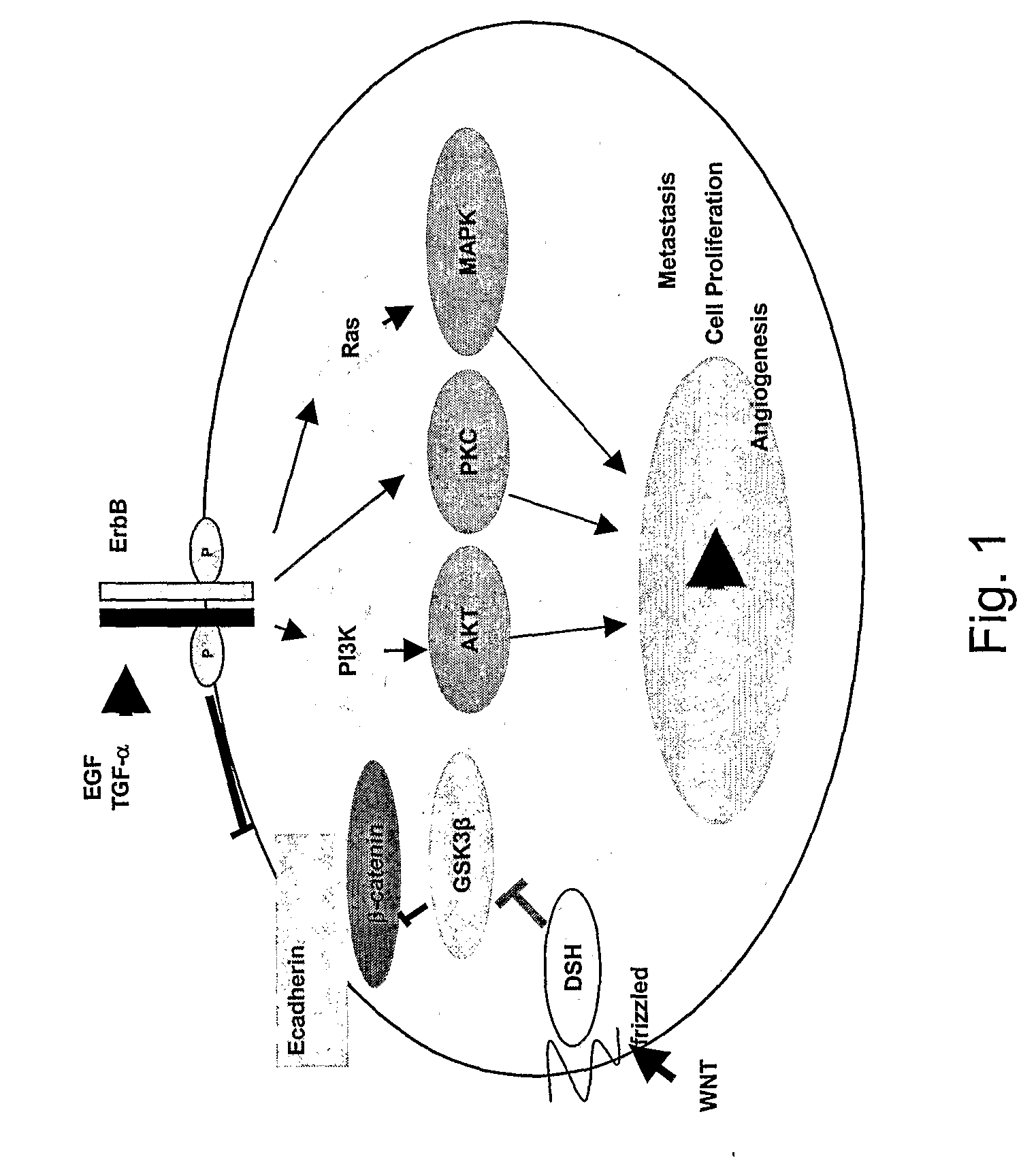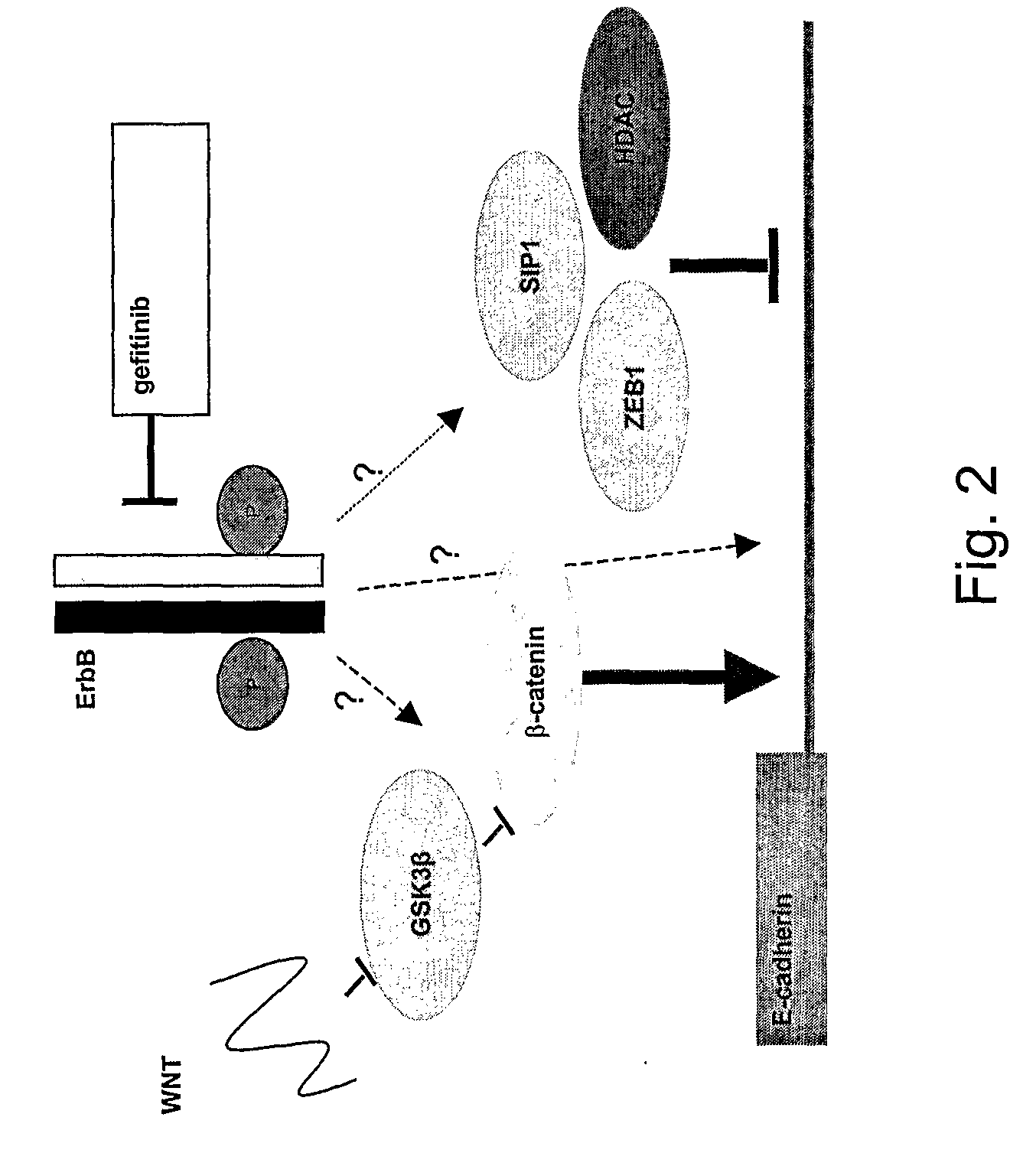Gefitinib Sensitivity-Related Gene Expression and Products and Methods Related Thereto
a technology of sensitivity and gene expression, applied in the field of gefitinib sensitivity related gene expression and products and methods related thereto, can solve the problems of poor response of bacs to conventional chemotherapy, no selection criteria for determining which nsclc patients, and less than a third of patients with advanced stages of non-small cells
- Summary
- Abstract
- Description
- Claims
- Application Information
AI Technical Summary
Benefits of technology
Problems solved by technology
Method used
Image
Examples
example 1
[0103] The following example describes the identification of a biomarker panel that discriminates gefitinib-sensitive cell lines from gefitinib-resistant cell lines.
[0104] Methods: Gefitinib sensitivity was determined in 18 NSCLC cell lines using MTT assays. Cell lines were classified as gefitinib sensitive (IC5050>10 μM) or intermediate sensitivity (1 μM50>1). Oligonucleotide gene arrays (Affymetrix® Human Genome U133 set, 39,000 genes) were done on 10 cell lines. Three distinct filtration and normalization algorithms to process the expression data were used, and a list of genes were generated that were both statistically significant (unadjusted p=0.001 cutoff) and corrected for false positive occurrence. This approach was used in combination with 5 distinct machine learning algorithms used to build a test set for predictor genes that were successful for 100% of the test cases. The best discriminators (>3 fold difference in expression between sensitive and resistant cell lines) we...
example 2
[0107] The following example describes the identification and further investigation of a target gene identified using the gene expression profile disclosed herein.
[0108] In this experiment, the present inventors describe research to examine the influence of E-cadherin-regulatory molecules on non-small cell lung cancer (NSCLC) response to EGF receptor (EGFR) inhibitors.
[0109] The EGFR, a member of the erbB family of tyrosine kinases (erbB1-4) plays a major role in transmitting stimuli that lead to NSCLC cellular proliferation and survival. EGFR, highly expressed in NSCLC, is a primary target for NSCLC therapeutic intervention. In clinical trials, 11-20% of patients with chemo-refractory advanced stage NSCLC responded to treatment with EGFR inhibitors such as gefitinib (Iressa®, ZD1839). Currently, there are no markers that predict which patients will respond to treatment. NSCLC patients with poor survival have decreased expression of E-cadherin, a cell adhesion molecule. E-cadherin...
example 3
[0121] This example describes the evaluation of the detrimental effect of the zinc finger proteins ZEB 1 and SIP 1 on NSCLC cell lines sensitivity to EGFR inhibitors.
[0122] In the first part of this experiment, adenoviral constructs containing ZEB1 or SIP1 are used to overexpress these proteins in gefitinib sensitive cell lines. MTT assay will assess changes in gefitinib sensitivity. In the second part of this experiment, stably transfected ZEB1 and SIP1 cell lines and untransfected cell lines are implanted into nude mice. Transplanted mice are treated with gefitinib and the response is compared between the two groups.
PUM
| Property | Measurement | Unit |
|---|---|---|
| melting temperatures | aaaaa | aaaaa |
| melting temperature | aaaaa | aaaaa |
| melting temperature | aaaaa | aaaaa |
Abstract
Description
Claims
Application Information
 Login to View More
Login to View More - R&D
- Intellectual Property
- Life Sciences
- Materials
- Tech Scout
- Unparalleled Data Quality
- Higher Quality Content
- 60% Fewer Hallucinations
Browse by: Latest US Patents, China's latest patents, Technical Efficacy Thesaurus, Application Domain, Technology Topic, Popular Technical Reports.
© 2025 PatSnap. All rights reserved.Legal|Privacy policy|Modern Slavery Act Transparency Statement|Sitemap|About US| Contact US: help@patsnap.com



